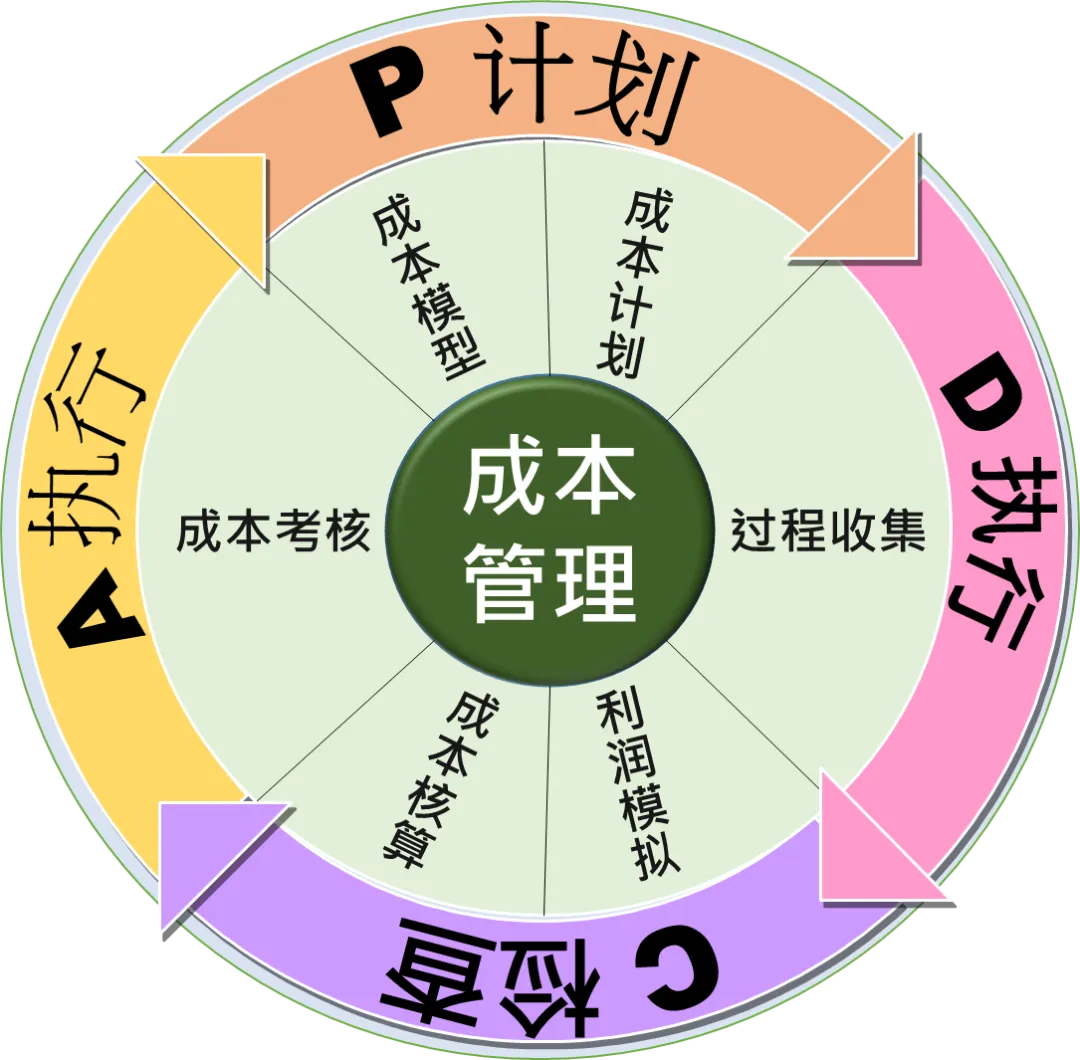Introduction: The role evolution of cost management
Faced with the rapid changes in the steel industry environment and the pressure of industrial upgrading formed by the national supply-side reform policies, steel enterprises have to think about the planning of transformation and upgrading and increasing cost control. Under this trend, the cost management structure must provide order-taking benefits for different steel grades and specifications in response to the production and sales characteristics of steel companies, provide cost refinement analysis for each process, and conduct cost accounting in response to various production conditions, and use scientific information to support the needs of enterprise upgrading and transformation and improving efficiency and reducing costs.
Cost control scenarios that have long plagued steel mills Many steel mills are limited to insufficient cost collection and processing capabilities or old information systems. They often only use the factory as objects to collect various input-output information from each factory, or can only use the steel type as objects for cost accounting. The cost collection caliber (grain size) is extensive, the various input and output data are not refined enough, or the upstream and downstream data are not matched, resulting in the cost data being kept in the role of emergency adjustment and post-calculation, and cannot shoulder more active tasks. Common scenarios that are troubled by cost controlhave: (1) How to use production capacity and adjust order acceptance strategies next month to maximize profits? (2) Can you predict the effectiveness of taking orders before taking this sales order? (3) How much does a change in the price of a certain raw material or fuel affect the cost of each product and specification? (4) It is not until the end of the month that some resource input and output data were found to be incorrect at the beginning of the month. How to avoid it? (5) The cost data fluctuates greatly. Which process and what causes it? (6) Which equipment and which workshop has the largest and most efficient cost reduction space? (7) When the production line spans multiple legal persons, how to obtain cost reduction information for each steel type and specification?
The problem of cost control when steel companies transform and upgrade When steel companies want to transform and upgrade, there are the following difficulties in cost management towards refined management: (1)Fine cost architecture: The cost structure must be combined with product specifications, manufacturing specifications and production processes, and the cost and expenses related to each process can be calculated in accordance with the characteristics of production, and the order-taking benefits and production cost accounting. (2)Complete cost module: In the face of competition, cost accounting only has the function of post-examination. Cost planning, cost analysis, and profit calculation modules must be added to complete the PDCA management circle, provide cost analysis data for each process in each product specification, promote cost reduction work in scientific ways, and adjust product development direction. (3)Level 1 cost control: Due to factors such as diversified product specifications, refinement of accounting particle size (to the process), and cross-legal related transactions, the volume of various cost-related data has increased rapidly, and it is no longer possible to collect, compare and account for cost data manually through the factory and company levels. Instead, it must be integrated with various modules such as sales, production, and energy systems to form source input and automatic integration, and complete the company's first-level cost control mechanism. (4)Elastic processing capability: For customized orders, the production and sales process of various residual materials, furnace assembly, pouring, correction, order transfer, scrap judgment, sales, etc. will affect the cost accounting of the order and the steel grade specifications, and will also become cost accounting problems that are difficult to solve by SAP and other kits (BOM-based production model). The cost system must cooperate with the integrated production and sales quality platform to achieve first-level management and control of production and sales records at all factory and company levels, and form first-level accounting cost accounting.
Functions that cost execution information system should have In response to the aforementioned management difficulties, an information platform that shoulders the task of reducing costs and increasing efficiency of enterprises must have a complete cost management PDCA circle, provide cost models, cost planning, cost accounting, cost assessment modules, and have order-taking benefits forecasts, becoming the most powerful support for steel mills in cost management and business decisions: (1)Cost Model: In conjunction with product specifications and manufacturing specifications, refine the cost center to the manufacturing process, and consider the various input and outputs of each process to complete the cost account planning as the infrastructure for cost planning, accounting, and assessment. (2)Cost Planning: Standard costs are established for each steel specification to set the target value of each cost and expense as the basis for cost assessment. (3)Cost accounting: Cooperate with various process machines, MES, energy modules, raw material modules, and sales modules to complete the source input of data, and automatically process self-produced, purchased, modified, sliced, scrap, rolled material consumption, external sales, internal collection... various transaction materials based on the cost operation model, forming factory accounting and inventory accounting, and finally completing daily and monthly cost accounting according to the cost model. During the accounting process, intelligently warns abnormal data for early processing and ensures the correctness, integrity and timeliness of the data. (4)Cost Assessment: Provide daily cost analysis, cost reduction (cross-legal person), and analysis of the difference between standard costs. The cost control performance of each process and workshop, and the cost transmission mechanism of changes in the unit price of each resource cannot be evaded. (5)Profit simulation: Before the enterprise accepts an order, it can instantly connect the order price to provide profit simulation to effectively apply production capacity through data conversion between product specifications, manufacturing specifications, and standard costs of each process; especially steel mills with special steel and futures sales models, can create maximum benefits by simulating profits. Conclusion: The necessary plan for steel companies to increase value and reduce costs ICSC mainly uses an integrated production, sales and quality platform suitable for the characteristics of steel enterprises. It has been recognized by major steel companies at home and abroad for more than 30 years. The cost management system developed by ICSC in response to the cost management needs and control difficulties under the steel production model is the best solution for domestic steel companies to transform and upgrade, improve efficiency across the company, and reduce costs in various processes.


 2021-11-17
2021-11-17 ICSC News
ICSC News 上一篇
上一篇




